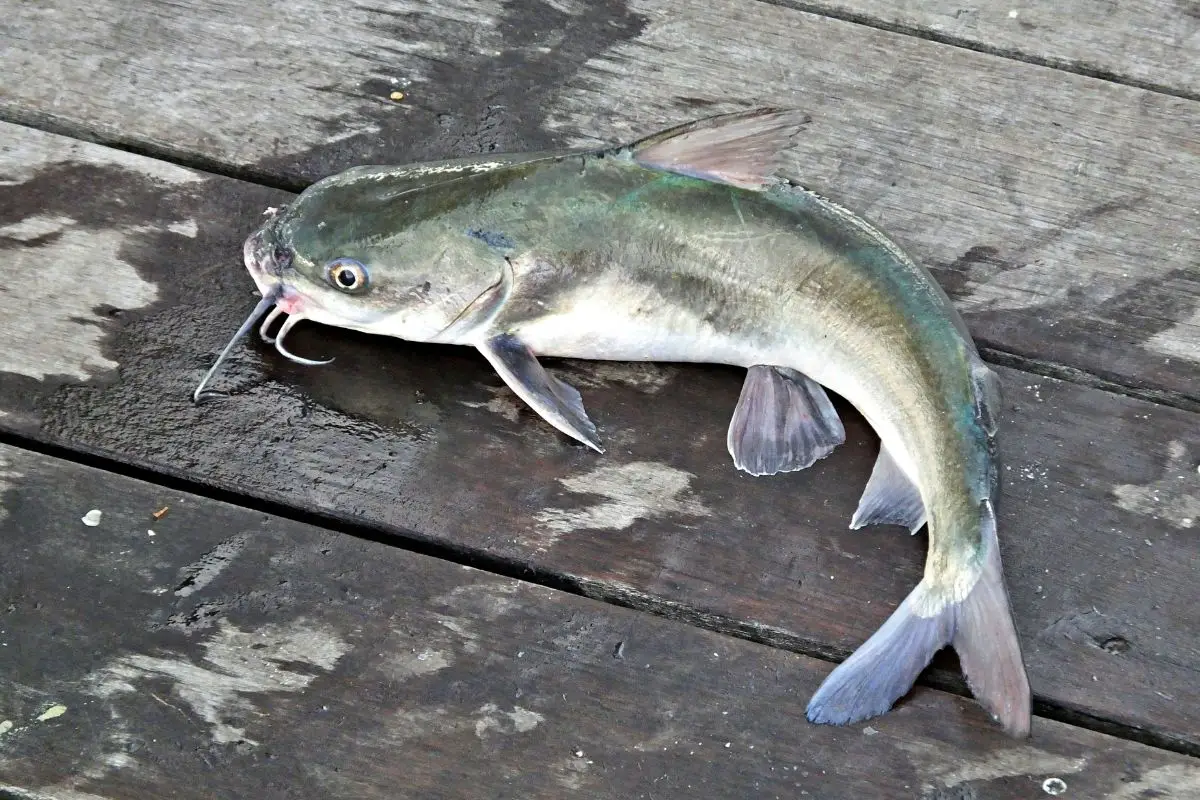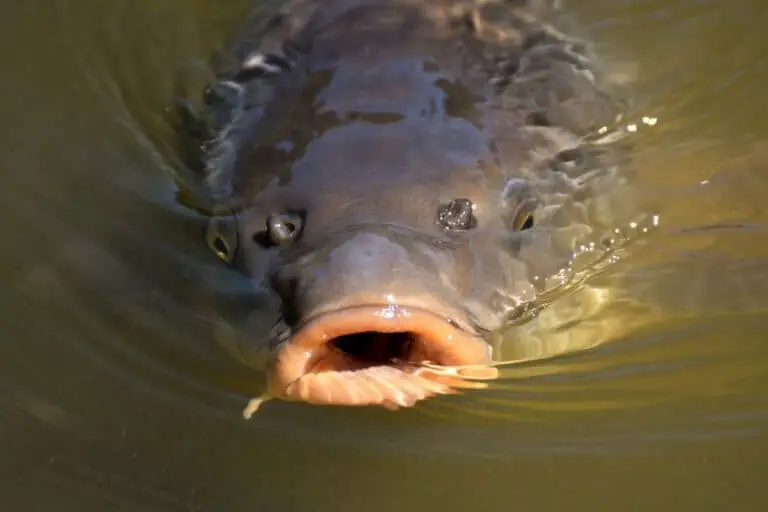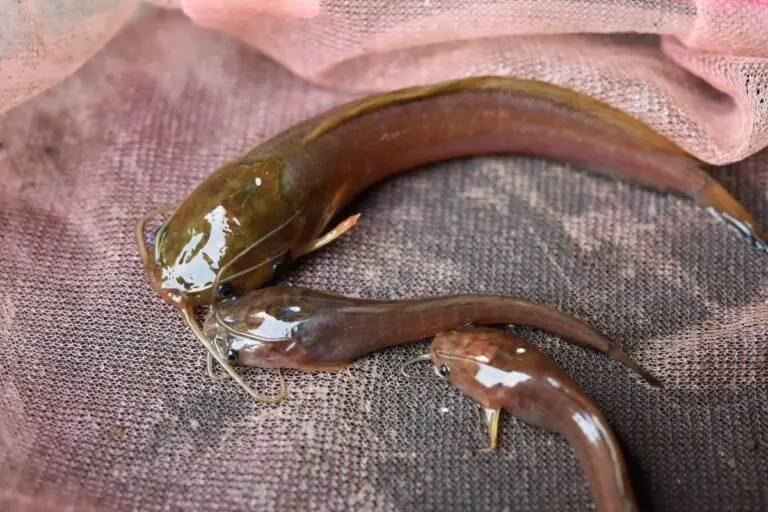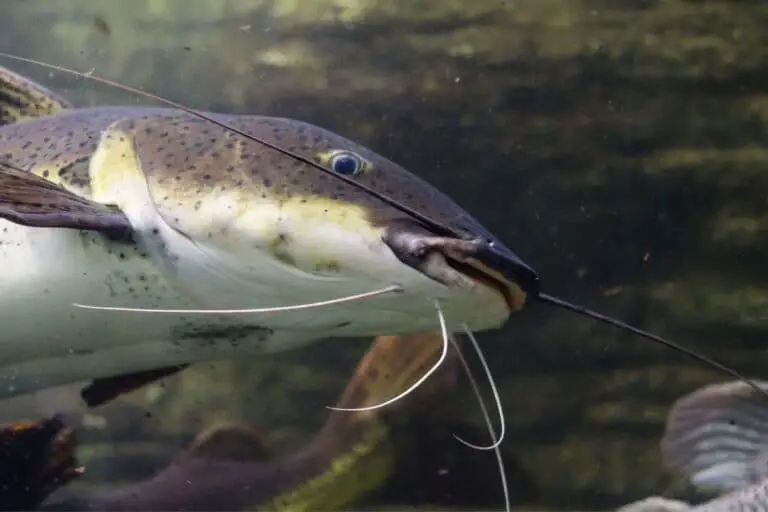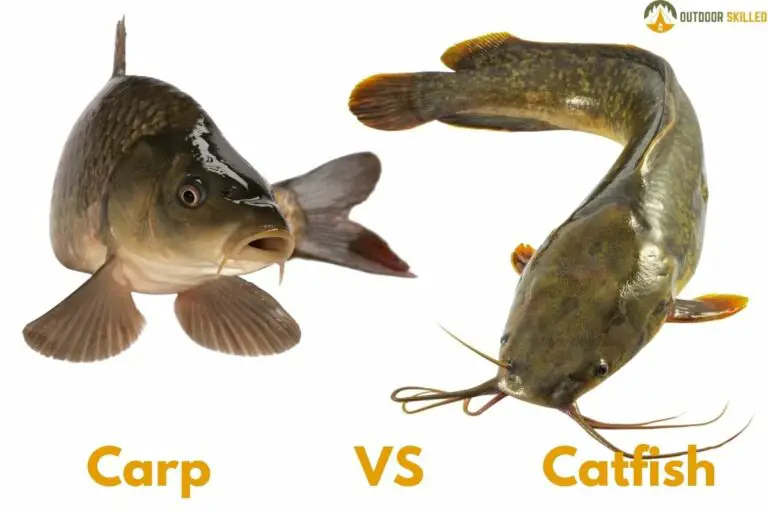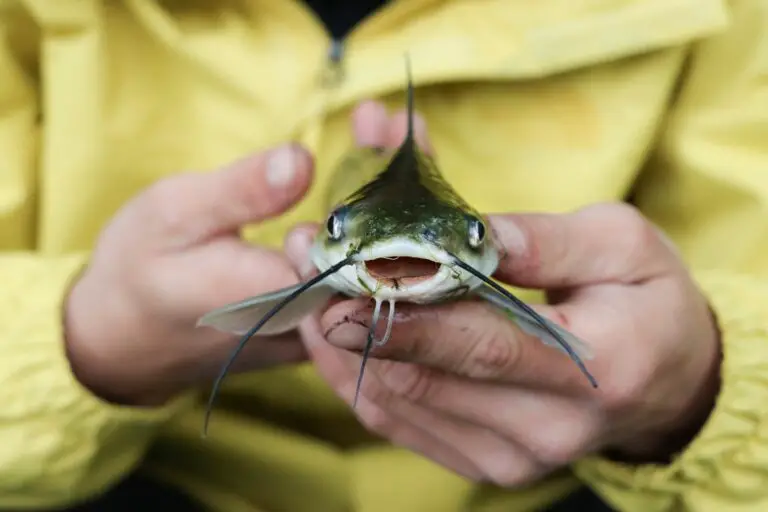Do Catfish Bite in the Rain? How to Catch Big Catfish in the Rain?
Catfish are some of the most sought-after fish around the world. Many anglers usually go for this unique fish because they have many distinctive types. They’re also known to be very smart, so catching them can be challenging, especially in rainy conditions.
Do catfish bite in the rain? Catfish do bite in the rain. Catfish actually bite more often in the rain than they usually do because the changes in water conditions during rain cause them to become more active and hungry. So, you need to be prepared with the right bait and tactics to catch more catfish in the rain.
Catfish behave differently when it rains, and there are different ways to take advantage of that to catch more fish, so keep reading to learn more about catfishing in the rain.
Table of Contents
How Does Rain Affect Catfishing?

Rain affects catfish and their feeding habits massively. For example, if the rain is too cold, catfish tend to move to streams and rivers where the water is warmer.
Alternatively, if it’s a summer rain, catfish consider this a blessing as the rain cools down the water temperature to make it more ideal for the catfish.
Rain also drifts food to the water, which results in catfish moving towards where the food from the land has drifted to the surface.
In this case, they usually go for calmer areas of the stream that aren’t heavily affected by inevitable debris. Rain could also make catfish feed more aggressively.
Do Catfish Bite in the Rain?
Catfish are very curious creatures. They are constantly swimming around and exploring the environment. This explains why catfish usually behave differently when it rains as the water temperature changes with the rain and affects how catfish behave.
They actually bite in the rain more than they usually do because the changes in water conditions during rain cause them to become more active and hungry.
How to Catch Big Catfish in the Rain?

To catch catfish in the rain, you have to have the right lure, location, and knowledge. Rain comes in different seasons, and it’s important to know how catfish react to rain during each season. Below, we will discuss how to catch catfish in the rain under different circumstances.
Catching catfish in the summer rain can be really easy. Usually, catfish are more drawn to areas of the water that are cooler and full of oxygen.
They usually seek the bottom of whatever body of water because the water temperature is naturally colder down there. Catfish respond well to summer rain.
Unlike summer rain, winter rain has the opposite effect. Winter rain tends to warm the water temperatures, which leads catfish to rise to the top.
This causes catfish to scatter around more often, looking to feed, so it can be a little difficult to locate them. But once you do find the right place, catfish will definitely be willing to bite.
Where to Find Big Catfish in the Rain?
Finding catfish and knowing where they usually stay can be key to successfully catching big catfish in the rain. Locating them also depends on the season since catfish react differently to each season and how heavy the rain is.
For example, during the summer, you will usually find that catfish swim near the bottom or towards cooler, calmer areas of the lake. However, in rivers, if the rain is heavy enough, catfish will move expeditiously. Some catfish will swim towards dams, and some will move into creeks. You can learn how to find Catfish in rivers in this guide.
However, in the winter, catfish will usually rise to the surface where it is warmer in light rain, whether it be in a lake or a river. If a pond or a lake doesn’t have any dams or creeks, catfish usually just stay near the surface and feed on worms or bait.
What Is the Best Bait to Use to Catch Catfish in the Rain?
Knowing the right type of bait to use while there’s rain is very important for an angler. Catfish usually feed on dead bait that they find washed up from land to the water due to the rain. However, you can take advantage of that time by using the right type of bait to attract catfish.
If you really want to catch a big catfish during the rain, you’re better off using bait such as shad, clam meat, bluegills, or shiners. The bigger types of catfish, such as flatheads and Blue catfish, tend to go for these types of bait rather than going for worms.
Other types of bait that usually attract big catfish include yellow perch, alewives, and herring. However, it’s been proven that using bluegills and shad are the best two options. Flatheads seem to really like bluegills, while Blue catfish prefer shad.
What Is the Best Lure to Use to Catch Catfish in the Rain?
Knowing now that catfish often move quickly in the rain, you will want to use a type of lure that will catch the catfish’s attention quickly. It’s best to use something like quick-moving plugs and spinnerbaits.
Catfish are a smart type of fish, and their senses of smell and sight are incredible. Using the same lures you would use on any normal day may have the same effect as using them on rainy days. Using something as bright as a Cheeto puff might be a good option for you.
Sometimes, you have to get creative with the lure you use during the rain. The goal here is to try to grab their attention as effectively as possible. Using strawberry Starburst and wrapping it around a salmon egg could also be worthwhile. Another favorite among anglers is raw chicken gizzards.
What Are the Best Tactics to Use to Catch Catfish in the Rain?
Catching big catfish in the rain is very possible. There are means and ways to do so. Many anglers have caught big catfish after heavy rainfall, but you can get lucky catching catfish just as big during the rain. You just have to use some tactics to help you through it.
You can usually find catfish on river banks during the rain because they usually seek warmer waters. Knowing that, you have to prepare the best lure for river banks, as mentioned earlier. You have some competition when it’s raining, however, because catfish usually feed on living creatures.
Using bait such as shad and bluegills will give you an advantage over those living creatures since big fish are naturally attracted to those types of bait. Using the right type of lure is just as important. Something bright will usually do the trick.
When it comes to your gear, the best types of rods to use are usually medium or medium heavy, depending on the type and size of catfish you’re trying to catch. If it’s a bigger type of catfish, such as flathead or a blue catfish, it’s best to use a medium-heavy rod.
How to Catch Catfish in Muddy Waters?
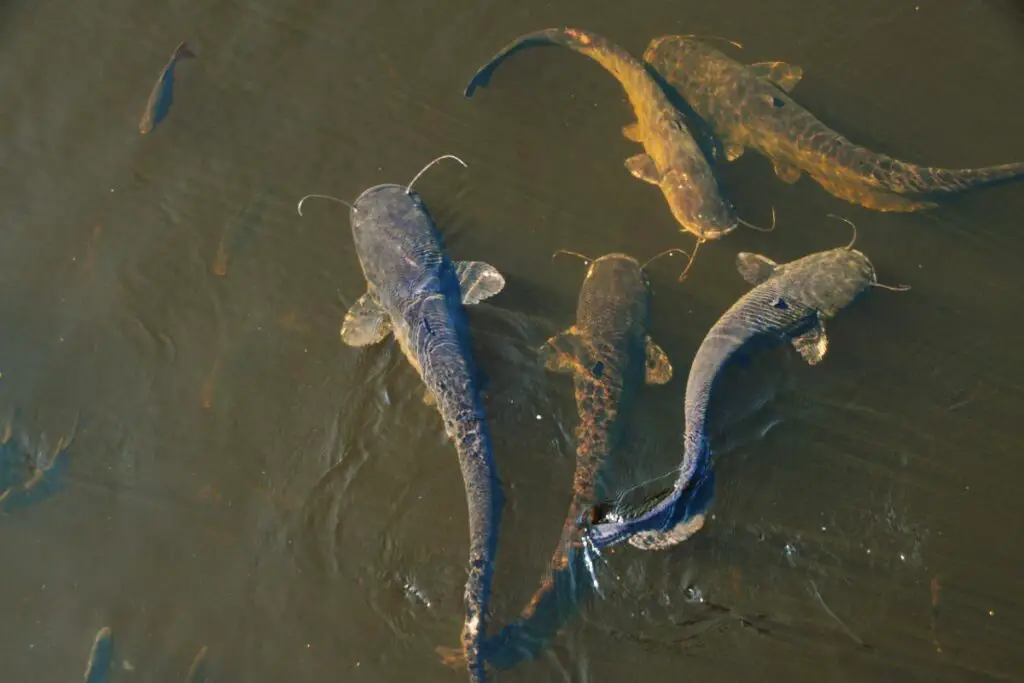
Muddy water usually occurs after heavy rain. Catfish have an advantage in muddy waters because they sometimes rely on their vision when it comes to finding food. This allows catfish to find their prey and eat them before they even realize it.
The key to catching catfish in muddy water is knowing when to fish for them or where to find them in these very murky areas. It’s actually quite easy to catch catfish in the muddy water because they usually prefer it over clear water.
Whether it’s a lake, river, or pond, it’s best to look for areas of the water that are clearer than the rest. That is where catfish usually bunch up to be able to see better. You can usually find them in areas with thick covers or near grass in lakes and ponds. But in streams, you can find catfish on the side where the water is slower.
The best time of day to catch catfish in muddy water is during the afternoon because the water is usually warmer and catfish feed more during that time. You also have to have the right type of tools with you to be able to catch them under these conditions.
What Are the Best Rigs for Catfishing After Rain?
Since catfish are pretty aggressive, it’s good to have heavier gear with you. Firstly, your catfishing rod needs to be heavy as well as flexible. Finding the right size between medium and medium-heavy, depending on the type of fish you’re seeking, is also vital.
When it comes to reels, the best option for you in these muddy water conditions is the reels that are made of high-quality materials and have large lines. That way, you can reach catfish as far as they swim with little struggle. Pairing your reel with a braided fishing line or a monofilament is extremely beneficial as well.
You can find my picks for the best catfishing reels here, and my favorite braided fishing lines in this guide.
Of course, using the right type of bait and lure is just as important when it comes to catfishing in muddy water. Colorful lures are your best option since muddy water can deter the catfish’s vision. Using colorful lures can help attract them when the water is too muddy.
Related Questions
Where Do Catfish Go When It Rains?
Catfish will go to creeks that lead into a larger river in the rain. They usually follow wherever their food is. As a result, they usually end up in the shallow parts of the river. Sometimes, however, in lakes, they swim near the bottom if the water temperature is too cold on top.
When Is the Best Time to Catch Catfish?
The best time to catch catfish is when the water temperatures range between 65-76°F (18.3-24.4°C). Not only does that make the water temperature perfect for catfish, but it also provides stability in the water for catfish, which makes it a lot easier for anglers to catch catfish in these conditions.
Is Rainy Weather Good for Catfish?
Rainy weather is good for catfish because they are more likely to feed during that time. They also become more active and start looking for prey than they do on other days. Rain also gives catfish more cover than usual, allowing them to freely search for food, making them easier to catch.
Outdoorskilled’s Recommended Gear for Superb Catfishing
I’ve testeI’vezens of reels, rods, and lines for Catfishing, and after years of testing, here are my quick picks that will definitely improve your current setup and results!
My recommended reel is the Abu Garcia Ambassadeur Reel C3-7000 which is ideally suited for catfish.

The rod I always recommend is the KastKing Perigee II Fishing Rod. It’s lightIt’sht, durable, and affordable. Furthermore, you’d haveyou’dde selection of models to choose from, whether you’re looyou’reor a spinning or casting rod. Lastly, it comes in twin-tips models, which means you’ll be you’llg two rods rather than one.

What I use is the Berkley Trilene Big Game Monofilament Fishing Line as it’s the sit’sgest, toughest mono I’ve ever I’veed and because it has exceptional shock strength, great knot integrity, tremendous abrasion resistance, and a high-visibility color option, you really can’t findcan’ter options

Helpful Resources
How Weather Affects Fishing: All You Need to Know
Resources for Catching Catfish Faster and More Easily
- Upgrade your gear with the best Catfish Rods here and the best Catfish Reels here
- You should also check out these perfect catfish rod and reel combinations here.
- Take your catfishing skills to the next level by checking this guide to catching Catfish
If you like this article, please share it or pin it, you can find the share buttons below. We will really appreciate it ❤️

